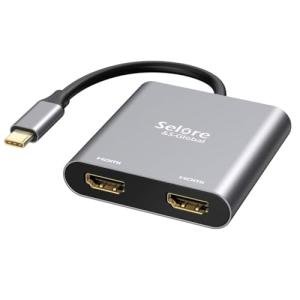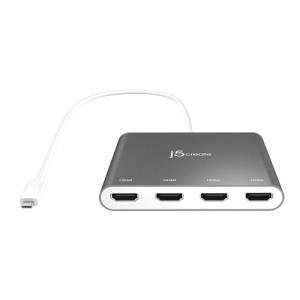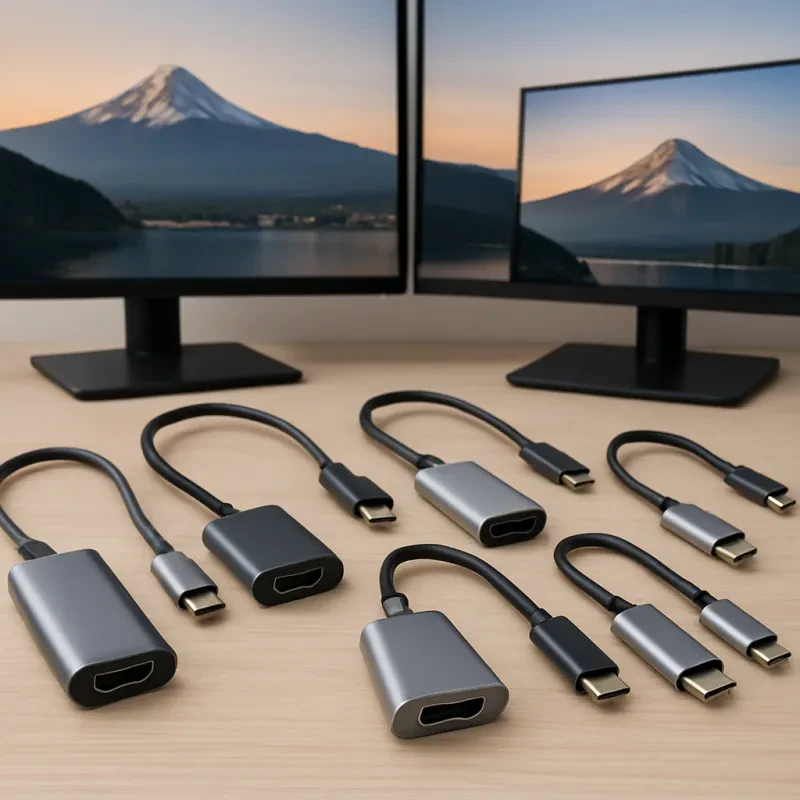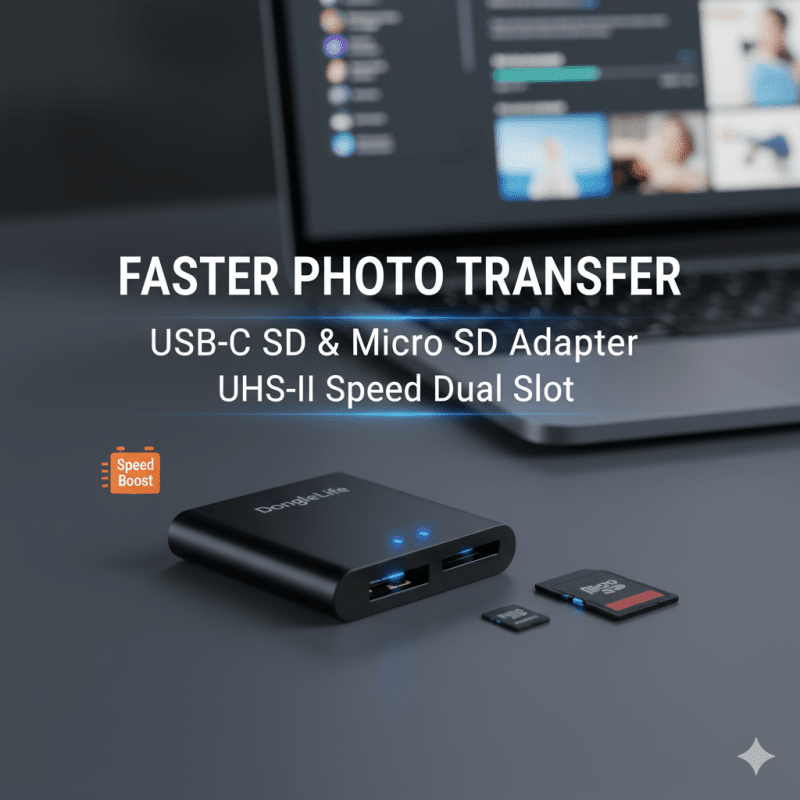The Many Benefits of USB-C: A Comprehensive Overview of The New Standard
USB-C, the new standard for USB connections, offers a range of benefits that make it a revolutionary technological advance for computing and mobile devices. In this article, we will look in-depth at these benefits and why USB-C is becoming the preferred choice for powering and connecting electronic devices.
1. Reversible Connector
USB-C is a reversible connector, which means it can be plugged in any orientation, making it more convenient for users to connect devices without needing to fumble around to find the right orientation for the plug.
2. Faster Charging and Data Transfer
USB-C offers faster charging and data transfer when compared to its older counterparts. It has a maximum data transfer rate of 10Gbps and can power up to 100W, allowing you to charge your laptop, tablet, or smartphone in a shorter amount of time than before.
3. Multi-purpose Connectors
USB-C offers multiple uses. Along with charging and data transfer, it offers video output which essentially enables to connect your devices with a monitor or TV, run video on multiple devices, and even download data from any device. This also makes it more convenient to connect multiple devices with the same port.
4. Universality
USB-C is becoming more and more universal today, with many new devices such as smartphones, laptops, tablets, cameras and audio equipment all using it as a default charging and data transfer method.
5. Compact and Durable
USB-C is both sleek and compact, making it easier to move around with your device. Its durability also makes it resistant to wear and tear. Unlike older USB standards, USB-C ports don’t require any metal prongs to work, making it longer lasting and more robust over time.
The Future of USB-C
USB-C is becoming the new standard for data transfer and charging, and its increasing popularity means that it is likely to become even more widely adopted in the future. The technology behind USB-C is evolving at a rapid pace, and it’s expected that future generations will be even faster and more versatile, making it an even more attractive proposition for use across a range of electronic devices.
The Future of Connectivity: How USB-C Is Redefining The Way We Transfer Data
The USB standard has been the primary method of connecting devices to computers for more than two decades. However, there have been several changes to the standard over time, with USB Type-C (USB-C) being the latest iteration. This new standard offers significant improvements and introduces new features to the USB standard, which will redefine the way we transfer data in the future.
One of the most significant improvements that USB-C brings is its higher data transfer speeds. USB-C supports the latest USB 3.1 Gen 2 standard, which offers speeds of up to 10 Gbps. This means that it is possible to transfer large files within seconds. Furthermore, USB-C is designed to be bi-directional, which means that data can be transferred in both directions simultaneously.
USB-C also has a higher power output than older versions of USB. The standard can deliver up to 100 watts of power, which is sufficient to charge most laptops and even some small appliances. This feature eliminates the need for separate chargers, which can be cumbersome to carry around, and also means that only one cable is needed for charging and data transfer.
Another advantage of USB-C is its size and flexibility. The connector is reversible, which means that there is no wrong way to plug it in. Furthermore, its small size makes it a perfect fit for mobile devices such as smartphones and tablets. Its flexibility has also made it a popular choice for many laptops, including Apple's MacBook Pro lineup, which has adopted USB-C as its only port type.
Finally, USB-C is paving the way for future technologies such as Thunderbolt 3. Thunderbolt 3 offers even faster data transfer speeds, up to 40 Gbps, and can support multiple 4K displays simultaneously. Many high-end laptops, such as the Dell XPS 13 and the Razer Blade Stealth, already include Thunderbolt 3 ports alongside USB-C, which further emphasizes the importance of this new standard.
Overall, USB-C is an exciting development in the world of connectivity, with many potential applications in the field of data transfer and charging. Its improved data transfer speeds, power output, and flexibility make it an ideal choice for mobile devices, while its compatibility with Thunderbolt 3 and other future technologies make it a future-proof standard. As we move towards a world of smaller, more powerful devices, USB-C is likely to play a crucial role in enabling their seamless connectivity.
From Charging to Data Transfers: The Versatility of USB-C and What It Means for Everyday Life
USB-C is not just an advanced version of the USB port, it's a whole new level. Not only does it offer faster charging, but it also provides quicker data transfers, audio and video output, and versatile connectivity. In fact, its versatility is what makes it truly revolutionary, as it can be used for a wide range of applications.
One of the most significant benefits of USB-C is that it allows for fast charging of devices. This means that you can charge your smartphone, tablet, or laptop quickly and efficiently, without having to wait for hours for your device to reach full charge. Some USB-C chargers can even provide enough power to charge a laptop in just an hour or two. This is great for people on the go who need their devices to be powered up quickly.
But USB-C is not just about charging, it also provides high-speed data transfers. With speeds of up to 10 Gbps, USB-C enables you to transfer large files quickly and efficiently. This means you can easily transfer photos, music, and videos from one device to another without having to wait for ages for the transfer to complete. The high-speed data transfer feature of USB-C is particularly beneficial for those who work with large files, such as graphic designers or video editors.
Furthermore, USB-C supports audio and video output, which means it can be used to connect your device to an external display, such as a TV or monitor. This feature is great for people who need to present their work to a larger audience, or for gamers who want to connect their laptop to a bigger screen for an immersive gaming experience.
In addition to its charging, data transfer, and audio and video output capabilities, USB-C also has versatile connectivity options. It can be used to connect a wide range of devices, including smartphones, tablets, laptops, printers, and cameras, among others. This makes it a highly versatile port that can be used for a range of applications.
In conclusion, USB-C is a truly revolutionary port that offers a range of benefits, from fast charging to high-speed data transfers, audio and video output, and versatile connectivity. Its versatility is what makes it stand out from other ports, as it can be used for a range of applications, both at home and at work. As more devices adopt USB-C, it is clear that this port is the future of connectivity.
USB-C 9 in 1 Multi-Port Adapter
Expand Your Connectivity with this Versatile USB-C Multi-Port Adapter
Product information
SGD 101.45
Product Review Score
4.65 out of 5 stars
72 reviews







